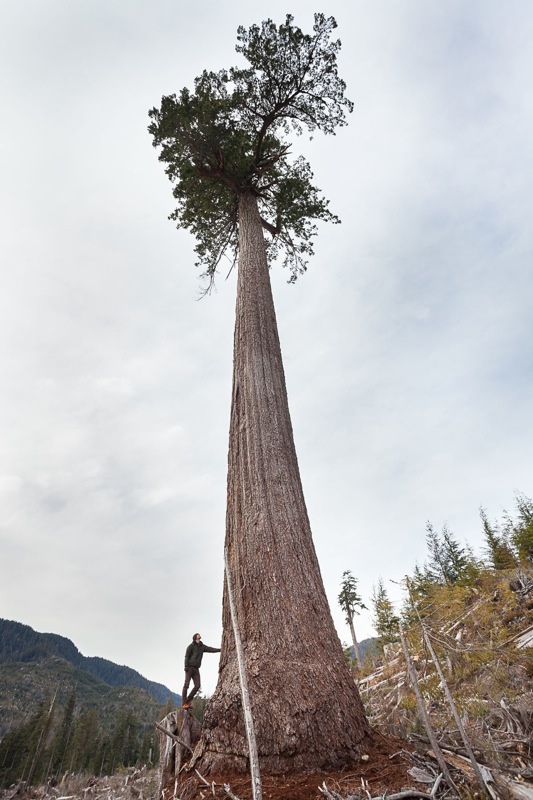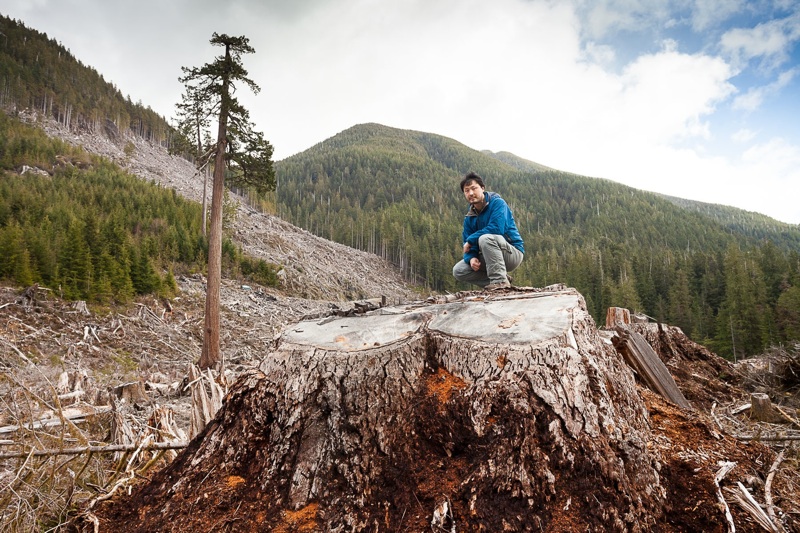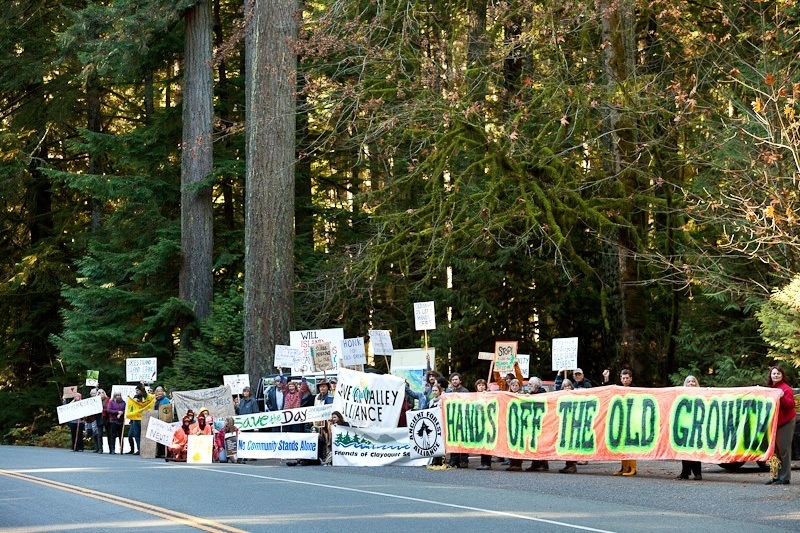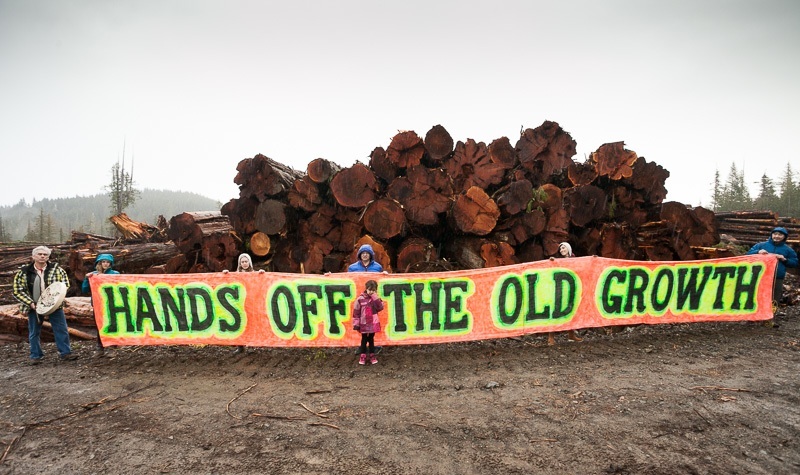
Vancouver Island Douglas-fir may be Canada’s second biggest
Judging from the rings on nearby stumps, the tree could be nearly 1,000 years old. "These types of colossal growth trees historically built B.C.'s logging industry. Now they're just about gone," Wu said. The group is calling for legislation to protect old-growth ecosystems and the big trees they contain. Wu noted the area where Big Lonely Doug was found now has even greater claim as the tall tree capital. The world's largest recorded Douglas-fir stands in the nearby San Juan River Valley and is measured to be 73.8 metres tall and 13.28 metres in circumference. "The biggest spruce is also there, there's the biggest cedar in Cheewhat Lake, and then there's Avatar Grove."

VIDEO: Canada’s 2nd Largest Fir Tree
Here's a news clip by CHEK TV on Big Lonely Doug, the 2nd largest Douglas-fir in Canada, featuring the photos of the AFA's TJ Watt.

Canada’s second largest Douglas-fir discovered
Newly-measured “Big Lonely Doug” is a gargantuan, old-growth Douglas-fir tree now standing alone in a recent logging clearcut on southern Vancouver Island. Conservationists call for comprehensive provincial legislation to protect BC’s biggest trees, monumental groves, and endangered old-growth forests on the International Day of Forests today, according to a press release from Ancient Forest Alliance.

Canada’s Most Significant Big Tree Find in Decades!
Newly-measured “Big Lonely Doug” is a gargantuan, old-growth Douglas-fir tree now standing alone in a recent logging clearcut on southern Vancouver Island. Conservationists call for comprehensive provincial legislation to protect BC’s biggest trees, monumental groves, and endangered old-growth forests on the International Day of Forests today.

Visit the AFA’s Booth this Saturday March 8th at Robinson’s Outdoor Store!
Come to Robinson's Outdoor Store (1307 Broad St.) this Saturday March 8th from 10am-4pm and stop by our Ancient Forest Alliance (AFA) booth to chat to our friendly staff, sign our petition, make a donation, or buy our beautiful posters, cards, stickers, and other items to help support the cause! Let this business know you are grateful to them for giving the AFA space to set up our booth!

Ground Zero: Island Timberlands
Government scientists Darryn McConkey and Erica McClaren stated "negotiations ceased because we could not agree on the management regime within these boundaries. Island Timberlands wanted to extract timber resources from within UWRs [Ungulate Winter Ranges] and WHA 1-002 [Wildlife Habitat Area for endangered Queen Charlotte Goshawks]
and Ministry of Forests could not scientifically rationalize how the quality of these areas could be maintained." Ministry scientists go on to say that Island Timberlands's proposed management "did not incorporate any input from the Ministry of Environment" and "is not supported by the best available science."

VIDEO: Ancient Forest Movement of BC
This short video, part of the series "Heartwood: A West Coast Forest Documentree" by Daniel Pierce of Ramshackle Pictures, features groups coming together in solidarity in Cathedral Grove in October 2013 to fight Island Timberlands' old-growth logging near Port Alberni.

Sat. March 1st – 4th Annual Tree Huggers Ball Dance Party Fundraiser for AFA!
It's that time of year again! The UVic Ancient Forest Committee is holding its 4th annual Tree Huggers Ball dance party fundraiser! This event, with great live bands and DJ's, has provided incredible support for the AFA, raising thousands of dollars over the past three years - all by having FUN!!
Where: Felicita's Pub at UVic
When: Saturday, March 1st
Time: 8pm-1am
Tickets: $10 at the door and all proceeds will go directly to the Ancient Forest Alliance! 19+ age event.

PHOTO GALLERY: Kwakiutl First Nation Protest Island Timberlands Logging
A week ago, Ancient Forest Alliance campaigners Ken Wu, TJ Watt, and Hannah Carpendale were in Port Hardy on northern Vancouver Island, where the Kwakiutl First Nation Band is currently protesting Island Timberlands' logging operations near their reserve. They invited us to meet community members, document the logging and protest, and support their efforts.

Arbutus RV Island Adventures Ep.1 – Avatar Grove
Shaw TV's Sucheta Singh takes us just north of Port Renfrew to Avatar Grove. A magical place full of old growth forest the size of skyscrapers.
